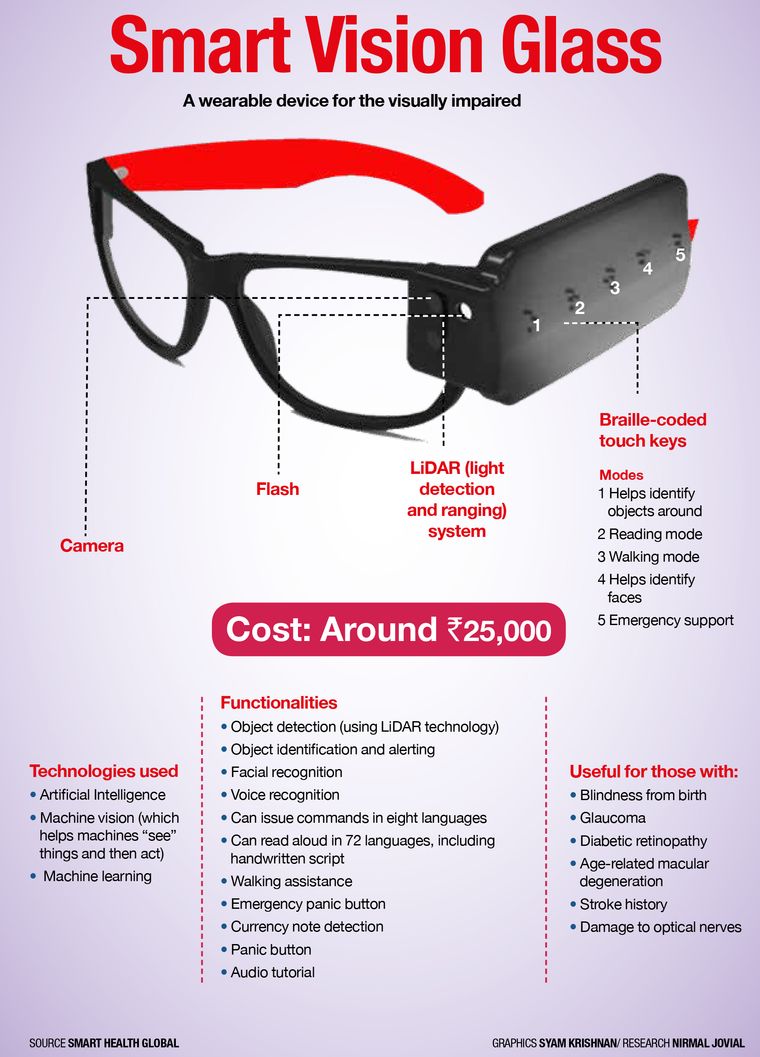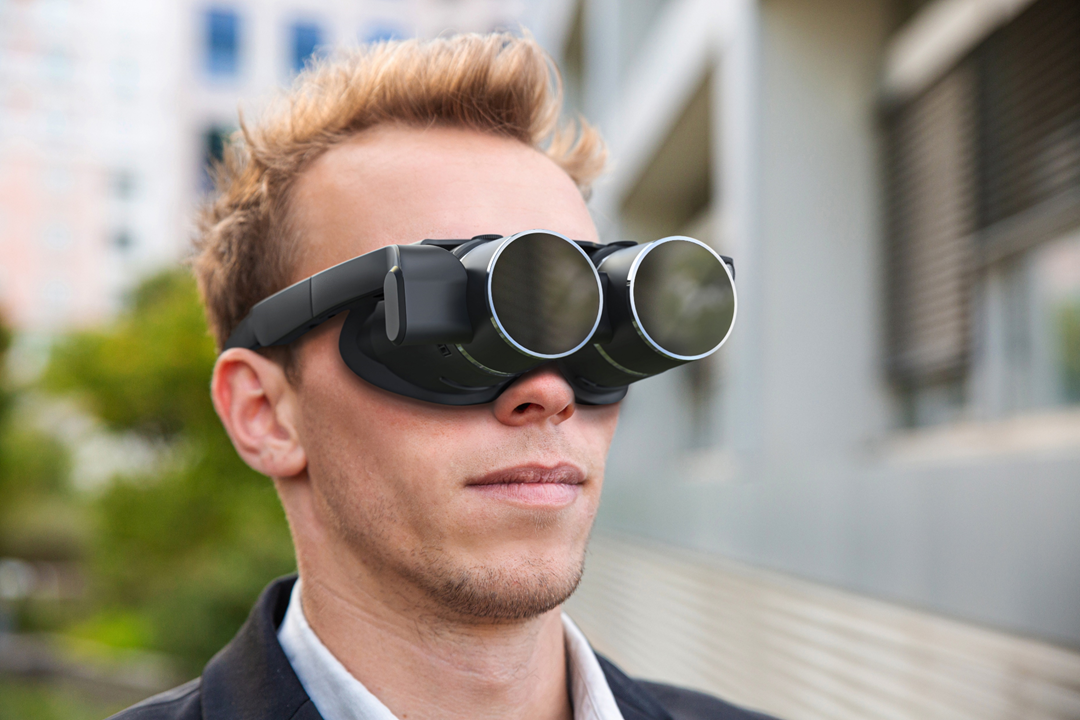Innovative Solutions in Assistive Innovation for Visual Disability
The landscape of assistive innovation for visual impairment is evolving swiftly, providing a range of ingenious remedies that improve ease of access and independence. From innovative mobile phone applications that help with navigating to wearable devices designed for real-time assistance, these devices are improving the experiences of those with aesthetic disabilities.
Developments in Smartphone Applications
In the last few years, advancements in mobile phone applications have actually considerably changed the landscape of assistive technology for individuals with visual disabilities. These applications leverage the powerful sensing units and capacities of modern mobile phones to give users with devices that boost independence and access in their every day lives.
Noteworthy amongst these technologies are applications designed for item acknowledgment, which utilize the mobile phone's cam to determine things and provide verbal descriptions. Such features empower users to browse their settings much more efficiently, whether determining items in shops or situating personal possessions in your home. In addition, text-to-speech applications have actually boosted significantly, allowing individuals to catch printed message via their device's video camera and obtain split second audio comments, therefore promoting analysis and understanding.
Navigation applications tailored for aesthetically damaged customers have actually likewise emerged, supplying acoustic advice and thorough area info. These tools offer vital support for mobility, allowing individuals to traverse unfamiliar spaces with self-confidence. Community-driven applications have promoted social communication and source sharing among individuals with visual impairments, creating an encouraging network that enhances their top quality of life. Generally, mobile phone applications have come to be essential allies in promoting autonomy and accessibility for individuals with aesthetic problems.
Wearable Gadgets for Navigation
Wearable devices for navigation have actually arised as a groundbreaking solution for individuals with aesthetic impairments, offering hands-free aid that improves mobility and positioning. These tools generally use innovative technologies, including GPS, ultrasonic sensors, and expert system, to offer real-time comments and instructions to users as they browse their environment.
One significant instance of wearable navigation innovation is wise glasses, which can find obstacles and relay auditory or haptic feedback to the wearer, enabling safe and efficient movement in numerous setups. Various other gadgets, such as belts and vests furnished with sensors, can likewise inform users of their surroundings by giving signals regarding close-by items or changes in terrain.
In addition, lots of wearable gadgets integrate with smartphone applications, enabling individuals to tailor their navigating preferences and receive customized path ideas. This personalization can significantly enhance the user experience, encouraging people to travel with better confidence and independence.
As modern technology remains to develop, the possibility for wearable navigation devices to enhance the quality of life for individuals with visual impairments stays substantial, leading the way for even more easily accessible and inclusive settings.
Smart Home Innovation Assimilation

Additionally, wise appliances outfitted with responsive user interfaces or auditory feedback supply instinctive communications that provide especially to the needs of those with visual impairments. For example, wise fridges can introduce their materials and expiry days, while wise ovens can direct customers via the food preparation process with audio instructions.
Home automation systems, such as smart doorbells and security cameras, offer tranquility of mind by permitting users to receive alerts and access live feeds using their mobile he has a good point phones, boosting individual security (AI-powered visual aids). Additionally, integration with tablets and mobile phones guarantees that users can handle their home setting from anywhere within their facilities
As smart home modern technology proceeds to develop, it holds the potential to change the living experiences of people with visual impairments, fostering independence and enhancing lifestyle in a significantly linked globe.

Educational Devices and Resources
Accessibility to reliable instructional devices and sources is vital for individuals with aesthetic disabilities, as it equips them to involve completely in their learning experiences. Numerous assistive modern technologies have been created to enhance ease of access and foster independent understanding.
Moreover, academic software particularly designed for aesthetically damaged individuals uses features such as high-contrast settings and customizable message dimensions. These devices suit varied learning designs and make certain that trainees can tailor their instructional experience to their requirements.
Furthermore, accessibility to digital collections and audio books increases the range of readily available knowing products, enabling pupils to check out subjects extensive without the constraints imposed by typical print resources. Collaborative systems that incorporate availability features likewise promote group jobs, guaranteeing that aesthetically damaged trainees can add meaningfully along with their peers.
Community Assistance and Involvement
A robust network of neighborhood assistance and engagement is vital for people with visual disabilities, cultivating an inclusive atmosphere where they find glasses can grow. Community organizations, regional campaigning for teams, and volunteers play a critical function in providing sources, details, and companionship, which are crucial for improving the lifestyle for those affected by visual disabilities.
Involvement activities such as workshops, get-togethers, and support system not only facilitate ability advancement but additionally advertise social interaction, decreasing sensations of seclusion. These efforts encourage people to share challenges, experiences, and successes, therefore enhancing community bonds. Furthermore, partnerships with neighborhood services can result in better availability in public spaces, additionally integrating people with visual disabilities into the neighborhood.
Technology likewise enhances community interaction with on the internet platforms that offer virtual support system and resources, enabling people to link no matter geographical barriers. By harnessing both electronic and in-person services, communities can create a comprehensive assistance network. Eventually, fostering collaboration among different stakeholders-- consisting of families, instructors, and health care professionals-- ensures that people with aesthetic problems receive the holistic support required to navigate day-to-day live successfully and with dignity.
Verdict
Ingenious services in assistive technology for aesthetic impairment dramatically improve the high quality of life for individuals dealing with these challenges. The combination of smart device applications, wearable devices, wise home modern technology, and educational devices promotes better independence and accessibility. Community assistance and engagement more empower visually damaged individuals, advertising inclusivity and involvement in various facets of life. Collectively, these developments not only transform everyday experiences yet likewise lead the way for a more fair culture.
The landscape of assistive modern technology for aesthetic problems is developing rapidly, offering a range of ingenious services that improve ease of access and freedom. Community-driven applications have fostered social communication and resource sharing among individuals with visual problems, creating a supportive network that enhances their high quality of life. Overall, smartphone applications have actually come to be vital allies in advertising freedom and access for individuals with aesthetic problems.
Many individuals with visual impairments are locating higher autonomy with the assimilation of clever home innovation.Innovative services in assistive modern technology for visual disability considerably enhance the top quality of life for individuals facing these difficulties.